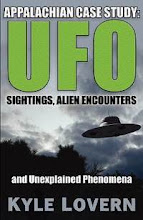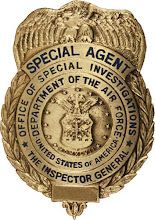Saturday, March 27, 2010
Can troops find hidden bombs with sixth sense?
By Steve Hammons
Recent research has determined that some US military personnel are better than others in the ability to detect hidden improvised explosive devices (IEDs). But why?
According to a US Army research project, troops raised in rural and forested areas seemed to be better at it. Troops who grew up in tough urban areas also seem to excel in this kind of perception.
The common denominator is “situational awareness (SA)” that is key to hunting and being aware in the natural environment as well as in dangerous neighborhoods where people can become a victim of violence or other crime.
But what other important factors might be in play? And how might the understanding of human perception and consciousness benefit all of us?
In the first issue of the fascinating new magazine EdgeScience (October 2009 edition), editor Patrick Huyghe’s article “Straight from the Gut” explored the two-year Army study on perception led by researcher and psychologist Steven Burnett. Huyghe also took a look at some of the media coverage on the study.
In addition, he notes the work of other well-known researchers on human consciousness who propose that other interesting elements may affect troops’ abilities to perceive IEDs.
These theories, backed up by significant research, note that hunches, intuition and gut feelings might be linked to the acquisition of information through human consciousness in ways we do not fully understand.
The conscious perception that something is going on that we need to be aware of might be related to factors other than clues in the physical environment that troops and all of us process consciously and unconsciously.
In some cases, another kind of perception may kick in. These may be split-second premonitions or what has been called “presentiment.” Troops and all humans (and maybe many animals) can use perceptual abilities and resources that have sometimes been called “anomalous cognition” of various types.
The recognition of danger, linked directly to personal and group survival, is a fundamental priority of human consciousness. As part of this perceptual priority, do we have a “sixth sense” that supplements and assists our other five senses of sight, hearing, smell, touch and taste?
MEDIA COVERAGE
In Huyghe’s EdgeScience magazine piece, he examined the New York Times article on the Army study by Benedict Carey who Huyghe described as an "experienced science writer hired by the Times in 2004 to cover human behavior and psychology.” The headline of Carey’s July 27, 2009, article was “In Battle, Hunches Prove to be Valuable.”
In Carey’s article, he notes, “The United States military has spent billions on hardware, like signal jamming technology, to detect and destroy” IEDs. He also explains that IEDs “have proved to be the greatest threat in Iraq and now in Afghanistan.”
“Still, high-tech gear, while helping to reduce casualties, remains a mere supplement to the most sensitive detection system of all – the human brain. Troops on the ground, using only their senses and experience, are responsible for foiling many IED attacks,” Carey wrote.
Carey also pointed out, “Everyone has hunches – about friends’ motives, about the stock market, about when to fold a hand of poker and when to hold it. But United States troops are now at the center of a large effort to understand how it is that in a life-or-death situation, some people’s brains can sense danger and act on it well before others do.”
Another article, this one in the Los Angeles Times, also examined the Army study. “Some troops have a sixth sense for bombs” was written by Tony Perry and published Oct. 28, 2009.
Reporting from the US Marine Corps base at Twentynine Palms, Calif., Perry wrote, “Military researchers have found that two groups of personnel are particularly good at spotting anomalies: those with hunting backgrounds, who traipsed through the woods as youths looking to bag a deer or turkey; and those who grew up in tough urban neighborhoods, where it is often important to know what gang controls which block.”
Perry added, “Of the bombs spotted before they could kill or maim, an estimated 90% were detected by someone, for instance, sensing something amiss along a dusty roadside in the southern Afghan province of Helmand or a crowded street in the western Iraqi city of Fallouja.”
Both articles by Carey and Perry examined the Army research project in some depth, interviewed researchers and troops, and explored theories of training to perceive threats and possible psychological aspects of this perception.
But, did either article (or the Army researchers) “take the next step” as EdgeScience magazine editor Huyghe called it?
Huyghe pointed out in his article that extensive studies “show that the brain actually anticipates emotionally charged situations, not only before the person is aware of them, but before any hint of them is available in any way, shape, or form.”
In other words, there are significant experimental and experiential indications that we have the capability to perceive things before they happen in linear time.
This view is consistent with research from the US joint military and intelligence project of the 1970s, ‘80s and early ‘90s generally referred to as Project STAR GATE. This project documented and used aspects of human perception and human consciousness that did “take the next step.”
A subsequent 2001 research paper by a Navy SEAL officer, prepared as part of his studies at the Marine Corps War College, proposed that implications from Project STAR GATE seem to demonstrate the advantages of learning more about human perceptual abilities.
In addition, he suggested that incorporating this kind of emerging understanding can be a key part of what he called “transcendent warfare.”
Project STAR GATE research and operational activities involved what some might call extrasensory perception (ESP). The project involved strict protocols trying to make use of this kind of perception. These formal procedures and methods were key parts of what was eventually called “remote viewing.”
Science journalists could focus more on these developments. In fact, journalists covering many kinds of beats may find important elements related to their work.
SITUATION AWARENESS
Interestingly, in the second edition of EdgeScience magazine (January-March 2010), a letter to the editor was published that provided more useful information on these subjects.
EdgeScience reader John MacLean explained that as a college instructor in Utah, he teaches a class in the “Technology Management Program” called “Reliability Engineering and Safety.” MacLean noted, “One of the chapters in this course is situational awareness.”
MacLean provided a short definition of situation awareness (SA): knowing what is going on around you.
In addition to MacLean’s succinct definition, SA has also been described as the perception of environmental factors within time and space, understanding the meaning of the factors and anticipating possible outcomes in the near future.
SA has become an important area in military activities, aviation safety, emergency services, critical engineering operations and similar fields.
“In this class we discuss how to have situational awareness and how to recognize when you have lost it. There are 11 clues that can be observed in one’s operating vocations that tell you that you are losing your situational awareness,” Maclean explained.
He points out in his letter to the editor that the 11 clues to the loss of situational awareness are primarily involved with conventional awareness of instrumentation, communication, adherence to standard procedures and similar aspects.
However, he notes that one of the clues involves “confusion, apprehensive feeling or gut feeling that something is wrong."
MacLean wrote, “Many dismiss various explanations as the subconscious observing a bad developing situation or seeing several of the clues by the subconscious. Personally, although some of these other explanations may be valid, I am wondering if precognition may be operable in these situations that are generally life threatening.”
MacLean goes on to explain how this “gut feeling” clue appears to have been demonstrated. He wrote, “An incident several years ago occurred with a Flying Tigers Airlines 747 on approach to Kuala Lumpur in Indonesia in the middle of a very dark night. From the direction they were on approach, the Instrument Landing System was out of service and they would have had to go another hundred miles to come in from the other direction where it was in service.”
“While several of the clues to losing awareness were eventually present, the first officer tried to get the captain to do the fly around, saying on three occasions, ‘Captain, I really don’t feel good about this, let’s go around and use the instrument system.’ These protestations occurred before any of the other clues were observable,” MacLean said.
“Because of the ultimate presence of several of the clues, unrecognized, they flew into a mountain. The other four clues were observable only just prior to the crash. From the data I observed in this incident, it appears the first officer’s comments were begun at least 15-20 minutes prior to the other four clues being observable.”
MacLean concludes his letter with a thank you to EdgeScience editor Huyghe. “The info you supplied in your article ('Straight From the Gut,' EdgeScience No.1) will be valuable in my class when we discuss situational awareness. I can’t put my finger on it precisely, but I have a feeling the ideas on precognition may be interacting somehow in the other 10 clues. Something to continue to ponder. Great article.”
NEUROBIOLOGY AND QUANTUM PHYSICS
From SA training to premonitions, ESP and remote viewing, we see a growing body of research and knowledge about human perception and human consciousness.
New studies in neurobiology are looking more closely at how the human mind and body might be processing information from our environment that we have no conscious knowledge of. And when we say “our environment,” we can no longer limit the meaning of this term to the immediate environment that we can see, hear, touch, smell or taste.
Our perception can apparently reach out beyond these five senses. The hypothesized sixth sense may work both independently of, and in cooperation with our other five senses. And, we may have other sensory abilities we do not understand. These might have neurological, chemical and biological aspects.
We may even have some kind of perceptual abilities like the radar and sonar that some other mammals seem to use.
Emerging understanding from quantum physics implies that consciousness itself can be in more than one place at a time. Beyond the physical level of reality there may be more exotic energies and forces that work in mysterious ways.
Consciousness may not be bound by limitations of only the five senses and other possible neurobiological perceptions, nor bound by time and space.
The recent Army study into troops’ ability to perceive IEDs seems to be another valuable step in the analysis of human perception, especially in the maintenance of safety and survival. However, as EdgeScience editor Huyghe noted, maybe we must be willing to go beyond some of the more conventional and limited perspectives.
The safety and survival of our troops, and all of us, are of the utmost importance. In addition, the larger field of human development may be an issue. Should current training and education in diverse and widespread settings include more robust examination of the emerging understanding about human perception?
Let’s catch up to the leading edge of the research and knowledge in these areas and provide training for our troops, students, professionals and people in all walks of life. Let’s cover these developments in science journalism and in the broader media.
Our safety, survival and success may depend on it.
(Learn more about EdgeScience magazine on the website of the Society for Scientific Exploration.)

























































































































































































